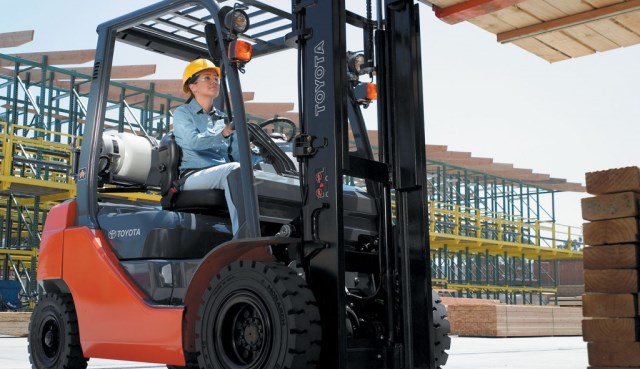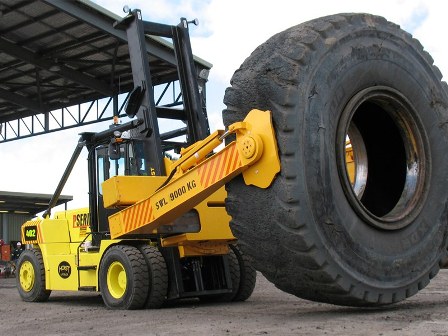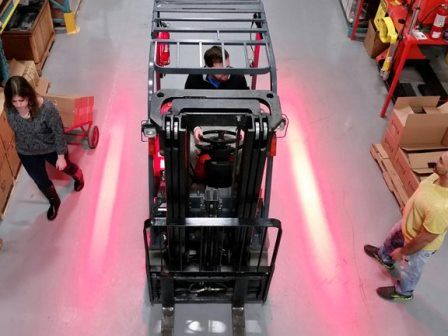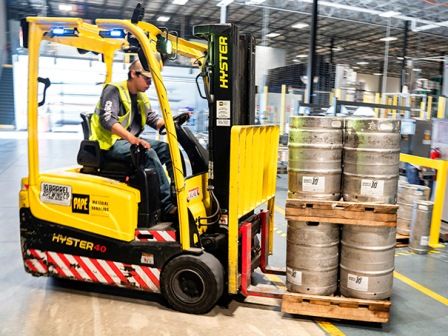The term Powered Industrial forklift Truck refers to a motorized, power-driven vehicle used to carry, push, pull, lift, stack, or tier material.
This definition generally includes vehicles that are commonly referred to as high lift trucks, counterbalanced trucks, cantilever trucks, rider trucks, forklift trucks, high lift platform trucks; low lift trucks, low lift platform trucks; motorized hand trucks; narrow aisle rider trucks; high lift order picker rider trucks; and counterbalanced front/side loader lift trucks.
The formal instruction component is achieved when a trainee completes the Powered Industrial Truck Web based training module.
Other options include equivalent training provided by equipment distributors, community colleges, or similar training providers.
Departments can use their own training materials, so long as the training materials meet or exceed OSHA’s requirements.
Practical training consists of instruction regarding workplace-specific factors and conditions, PIT specific considerations (e.g., location of controls, nameplate information, warnings, manufacturer’s operating instructions, etc.), as well as hands on exercises of typical vehicle inspections, operations, and maneuvers that will be conducted at the specific worksite by the operator.

SOP forklift operation
Generally, the trainer will demonstrate proper operation and techniques, followed by the trainee repeating those operations and techniques.
This should be with the same or similar equipment that the trainee will be using and in the same or similar location where the employee will be operating the PIT.
This is a reiterative process that allows the trainee to achieve competency in the safe operation of the PIT. Topics for practical training include:
- Specific pre-operational checklist for the equipment used.
- Specific operating instructions, warnings, and precautions as listed in the operator’s manual for the specific type of truck the trainee will operate.
- Surface conditions where the PIT will be operated.
- Composition and stability of loads to be carried.
- Load manipulation, stacking, and unstacking.
- Pedestrian traffic in areas where the PIT will be operated.
- Narrow aisles and other restricted places where the vehicle will be operated.
- Hazardous (classified) locations where the vehicle will be operated.
- Ramps and other sloped surfaces could affect the vehicle’s stability.
- Closed environments and other areas where insufficient ventilation or poor vehicle maintenance could cause a buildup of carbon monoxide or diesel exhaust.
- Other unique or potentially hazardous environmental conditions in the workplace could affect safe operation.
Forklift SOP
This Standard Operating Procedure (SOP) was written to incorporate all comprehensive training activities into one system to ensure that all personnel acquires the skills, knowledge, and qualifications needed to effectively carry out their duties and tasks.
A standard operating procedure (SOP) is a set of step-by-step instructions compiled by an organization to help workers carry out routine operations. SOPs aim to achieve efficiency, quality output, and uniformity of performance while reducing miscommunication and failure to comply with industry regulations.

Forklift Safety Procedures
Forklifts are extremely useful workplace vehicles, as long as they are used safely and appropriately by operators who are appropriately trained and competent to use them.

Standard Operating Procedure for Driving a Forklift
Safe Forklift Operation according to OSHA

Standard Operating Procedure for Forklift Operation
An untrained operator of a forklift can be as dangerous as an unlicensed operator of a motor vehicle.
